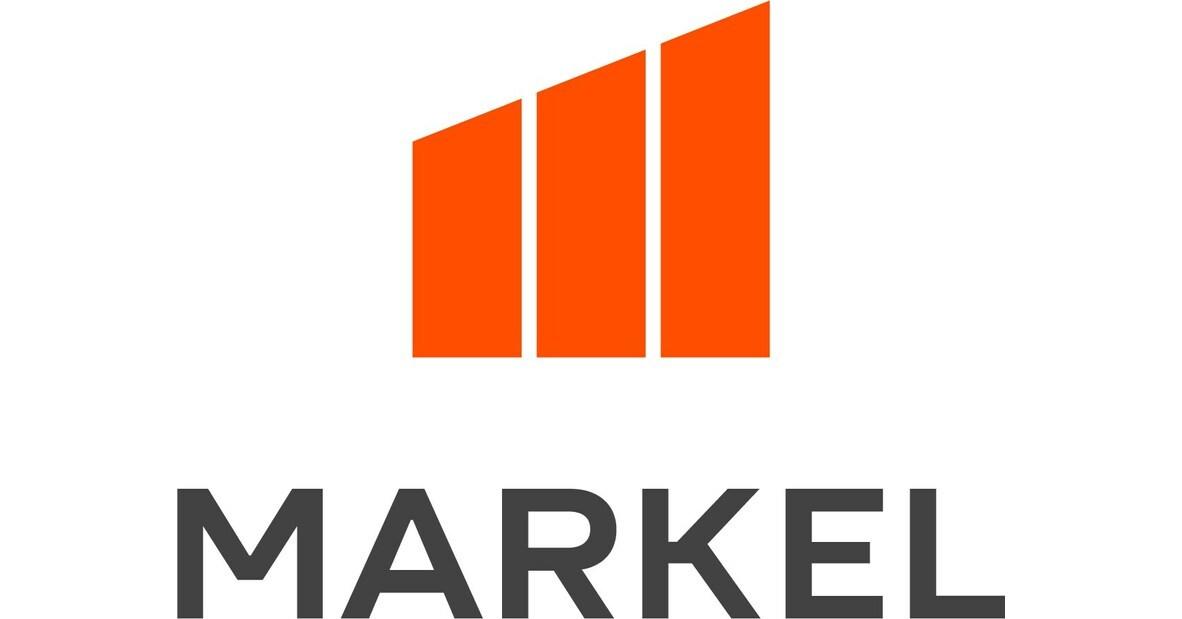AI in Insurance
Insurer in Full: AI investment lags ambition of insurance leaders as savings so far prove elusive
As insurance leaders enthusiastically advocate AI adoption, some in the industry highlight a mismatch in investment, which they put down to a lack of clarity on how the technology can deliver significant savings.
Searches by The Insurer of more than a dozen company reports and filings show little evidence of large financial commitments so far. The Insurer also asked 11 of the industry's largest carriers and brokers how much they have spent on AI adoption. All either declined to comment or did not respond.
Tom Spier, chief commercial officer of reinsurance broking platform Supercede, told The Insurer he had spoken to reinsurers with “extremely large innovation budgets that largely remain unspent".
Spier said this was because "they simply don't have the confidence on where to place those bets", adding that he was sceptical of investment claims: "They can't be. Otherwise, the sector would be bigger than it is … It just doesn't add up."
Kristy Lovegrove, group head of technology at the live and legacy business outsourcing firm Pro Global, also said that uncertainty around costs explained a “lack of budget representation for AI”.
Joe Brace, operations director at the Lloyd's Market Association, said: "Direct spend on AI companies, consultancies, products, it's in the single figure (percentage of GWP). It's going to be low at the moment."
Brace said that as the industry moves into a soft market there will be a focus on expense ratios, which will lead to a small uptick in AI investment as companies seek to cut costs via automation, however he doesn’t believe it will “move the dial”.
Several senior executives said the industry is still at the experimentation stage in AI and nothing specific to processing insurance transactions has been deployed at scale, while practical applications remain limited.

The next phase of insurtech will modernize with trust, not disruption
Up until about 20 years ago, the insurance industry evolved gradually, mostly through regulation, precedent, and relationships.
But that changed in the mid-2000s, with the rise of insurtech. In the era of “move fast and break things,” more than one tech founder decided they could remake the insurance industry from the ground up, eliminating its inefficiencies in the process.
Many big names of that era eventually flopped. Insurance, it turns out, is harder than it looks. More than that, though, it’s meant to provide stability. It’s built on trust, and its product is essentially a promise: if something goes wrong, the insurer will offer compensation.
But that doesn’t mean the insurance industry can’t benefit from technology like AI. It just means that the AI tools that transform insurance have to be built on a framework of trust—not just speed and automation. This is especially true in knowledge-intensive areas like underwriting, claims, and coverage analysis.
So how do we get there? By building AI systems that complement human expertise rather than seeking to displace it. Let’s examine what that looks like.
AI thrives at transactional tasks, not complex judgment work Much of the early hype around AI in insurance focused on automation: faster processing of applications, quicker FNOL intake, reduced human intervention in workflows. That’s because AI systems excel at transactional tasks with clearly defined inputs and outputs.
Where AI struggles is in the gray areas: interpreting policy language, assessing liability, and navigating the nuance of coverage positions across jurisdictions.
These scenarios—like trying to determine whether a complex claim is covered—aren’t simple matters of processing data to get an answer. They require nuanced judgment calls. Those calls can only be made by someone with the necessary context, experience, and professional skepticism—all traits that AI systems can’t replicate.
Dan Schuleman is the co-founder and CEO of Qumis
AI in Underwriting Report 2025
New survey reveals 77% of underwriters see AI as the biggest opportunity to boost performance and profitability in the next 12 months — here’s what they’re doing about it...
According to Intelligent Insurer’s brand new “AI in Underwriting Survey” (sponsored by Send) a strong 77% of respondents agree that AI presents the greatest opportunity to improve underwriting performance and profitability over the next 12 months – a notable rise from 65% in 2024. This upward shift could reflect growing confidence in AI's ability to streamline workflows, enhance risk selection, and support better decision-making.
The numbers say it all…
Last year, almost half of the underwriters we surveyed (48%) hadn’t touched AI, today that’s down to 19%. The rest are either piloting, deploying, or scaling AI, and the momentum isn’t slowing.
There is simply no other technology, or methodology, being deployed in the short-term that has the potential to exact this level of profitable change in underwriting. For underwriters, AI is no longer a nice-to-have or a pilot project, it’s a reality.
The choice is clear: Invest and adapt, or risk losing your competitive edge.
Download the full survey results here.
This special provides exclusive data directly from the mouths of underwriters to help inform your own strategy and benchmark against the wider industry.
You’ll discover unique insights to help you: Gauge where the market really stands on AI: Discover how underwriters expect AI to reshape their roles in the next 2–5 years, and how quickly organisations are moving from exploration to implementation.
For any queries:
Debbie Atwell, Senior Conference Producer – Intelligent Insurer, Newton Media Ltd.; Direct: +44 (0) 203 301 8252; Email: datwell@newtonmedia.co.uk

Harnessing AI for Insurance Innovation: Strategies for Effective Pilots | Insurance Innovation Reporter
The insurance industry has long recognized the potential of AI and machine learning to enhance efficiency and improve the customer experience.
Despite the complexity and time required to integrate these technologies, the urgency is clear—with 80 percent of insurance executives noting the growing inseparability of business and technology strategies.
To meet evolving needs, carriers should streamline technology pilots by engaging non-business partners early, clearly identifying success metrics, and working with AI champions.
From the nascent phase of AI and machine learning programs to the final stage of implementation, it is critical to engage broader stakeholders at every step.
The first step is consulting a wide range of stakeholders to identify the need or use case for AI or machine learning pilots, which is ideally tied to firm-wide priorities. For many, these needs could include processing an ever-increasing amount of unstructured and structured data sources—in turn driving efficiencies, identifying risk signals and links between data, and supporting programmatic auditing capabilities.
During the pilot phase, even if this period can sometimes involve lower levels of production scrutiny, teams should gather full requirements and stand up a governance protocol on the assumption that the pilot will be successful and deploy broadly.
ANDREW HOLSHOUSER is the Head of Underwriting Transformation for individual life and disability products at The Guardian Life Insurance Company of America

Captive owners turn to AI to combat nuclear verdicts
Captive owners and risk managers should embrace AI tools and predictive analytics as they look to mitigate the effect of nuclear verdicts on their insurance programs, experts say.
As jury awards exceeding $10 million become more frequent and severe, such technologies can identify high-risk claims early on and provide strategies to curb rising legal payouts.
Communication and early intervention are key to preventing large verdicts, the experts said during a panel session at the 40th annual Vermont Captive Insurance Association conference last week.
Actively communicating with actuaries, reinsurers and other stakeholders about emerging casualty claims is essential, said Melissa Hollingsworth, deputy chief risk officer of the Los Angeles Unified School District.
“You can’t sweep it under the rug. You have to be proactive and make sure you get it on people’s radars. I’m a big fan of communication. It goes a long way with helping mitigate these types of losses,” Ms. Hollingsworth said.
Reserving is crucial, she said. “Working with your actuary to predict and project out potential losses that are incurred but not reported, that IBNR, that’s really going to help, particularly with mitigating the impact on your captive,” she said.
In the first seven months of 2025, there were 70 verdicts of $10 million or more in the U.S., with an average payout of $238 million, said Denise Tyson, La Jolla, California-based CEO of Schaefer City Technologies, an insurtech that provides AI products meant to help guard against such verdicts.
News

Senator Schiff Brings Back Idea of Federal Reinsurance Program
Senator Schiff Brings Back Idea of Federal Reinsurance Program
Sen. Adam Schiff recently reintroduced his Incorporating National Support for Unprecedented Risks and Emergencies (INSURE) Act to create a federal catastrophic reinsurance program.
The insurance industry promptly reintroduced their opposition.
“The INSURE Act may sound helpful on paper but would not work in practice,” said Sam Whitfield, senior vice president of federal government relations for the American Property Casualty Insurance Association (APCIA), in a statement. “The INSURE Act shifts insurance risk to the federal government and the American taxpayer without solving the core issues facing insurance markets across the U.S.”
Schiff, D-Calif., said a federal risk reinsurance pool would improve the affordability of insurance. The program would be capitalized by $50 billion in federal funds. FULL ARTICLE

Mercury Insurance Submits California's First Sustainable Insurance Strategy Homeowners Rate Filing
Mercury Insurance (NYSE: MCY) has submitted a rate filing for its California Homeowners program based on the State's Sustainable Insurance Strategy. The filing is the first to use the recently reviewed Verisk Wildfire catastrophe model, which helps estimate the impact of future catastrophic wildfire events. Once approved, this filing will allow the Company to grow its footprint in higher wildfire risk areas.
Mercury's new rating plan will strengthen the Company's ability to offer coverage to Californians in distressed areas prone to wildfires, many of which are currently limited to the high-cost, limited-coverage California FAIR Plan, which has historically been the insurance plan of last resort provided for homeowners living in these areas.
"Commissioner Lara's Sustainable Insurance Strategy (SIS) will help stabilize the California homeowner's insurance market," said Gabriel Tirador, Mercury's CEO. "Our filing is the first step toward Mercury's goal of expanding insurance options for California homeowners and underscores our 60-year commitment to California customers and agents. As other companies scaled back their California operations, Mercury stepped up to provide more options for our agents and customers, and we are committed to continuing our efforts to help protect our California neighbors well into the future."
Mercury is implementing a number of discounts that could mitigate the increase while making homes and communities safer.
Another new home insurance company gets Florida permit. This makes 15 since reforms were enacted.
Suddenly insurance companies seem to be falling out of the sky in Florida.
Another new company — it would be the 15th since lawmakers enacted reforms in 2022 and 2023 to quell litigation costs — has been permitted by the Florida Office of Insurance Regulation and will begin to sell homeowner insurance in the state if the company’s application for a Certificate of Authority is approved.
Vision Insurance Exchange, headquartered in Cape Coral, plans to begin operating in November. According to its website, the company will offer coverage to homeowners in every Florida county except Monroe, where the Florida Keys are located.
Officials of the company did not immediately respond to an email and text message seeking comment late Monday.
Research
More Small Businesses Consider Dropping Their Insurers, J.D. Power Finds
As Premiums Rise, Insurers Struggle to Hold onto High-Value Customers
Amid rising premiums, customers of small commercial insurance agencies are more likely than they have been in years to defect to another insurer. According to the J.D. Power 2025 U.S. Small Commercial Insurance Study,SM released today, just 55% of customers say they “definitely will” renew with their current insurer, down 6 percentage points from a year ago.
“As premiums have risen to cover the cost of claims, it stands to reason that more customers would be willing to shop their policies. Interestingly, however, the drop in retention is not solely attributable to higher premiums,” said Stephen Crewdson, managing director of global insurance intelligence at J.D. Power. “In fact, insurers that communicate well and provide a higher level of service can make huge inroads toward keeping customers. Remarkably, satisfaction is at an identical level among customers who understand why their premium is increasing as among those whose premiums are not increasing at all, which puts a huge onus on insurers to bolster their outreach around rate increases.”
Following are some key findings of the 2025 study:
- Retention declines across the board: After several years of improvement and stability, intended retention has dropped significantly among customers across virtually all demographic groups. The largest dip is among Millennials1 (-12 percentage points).
- Service sets tone for retention: Competitive pricing is a key reason customers select and stay with an insurer, but service is just as important in retaining them. Overall, 16% of customers say good service experience is the most common driver of retention, beating out price, coverage options and reputation.
- Communication about rate increases is vital to satisfaction: Overall satisfaction, which is 722.
- Institutional knowledge,entirely on an insurer’s website (+23).SEE DETAILS
InsurTech/M&A/Finance💰/Collaboration

Markel Insurance completes agreement to sell reinsurance renewal rights to Nationwide
Markel Insurance, the insurance operations within Markel Group Inc. (NYSE: MKL), has completed the sale of the renewal rights for its Global Reinsurance business to Nationwide. This transaction was previously announced on July 30, 2025, and is part of Markel's broader strategy to simplify operations and focus on the distinct needs of its core specialty insurance markets.
Nationwide will delegate the underwriting and management of all renewal policies included in this transaction to Ryan Re Underwriting Managers ("Ryan Re"), a managing general underwriter of Ryan Specialty (NYSE: RYAN), through the expansion of their existing strategic alliance. Markel did not sell any insurance company entities as part of the transaction, and Markel's Global Reinsurance division has entered runoff, with premiums continuing to earn out over the next two to three years.
"This move will sharpen our focus on doing more of what we do best so that we can grow our core specialty insurance business," said Simon Wilson, Chief Executive Officer of Markel Insurance. "We are grateful to Nationwide and Ryan Re for being great partners throughout this transaction."
Transaction terms have not been publicly disclosed.
Financial Results

MS&AD posts $1.51b profit in Q1 2025 on underwriting gains | Insurance Asia
MS&AD Insurance Group Holdings Inc. reported fiscal first-quarter net income of $1.51b (¥222.7b), up from $1.39b a year earlier, driven by higher underwriting profit and fewer natural catastrophe and large losses.
Nonlife insurance direct premiums written increased to $9.70b from $8.57b, whilst life insurance gross premium income rose slightly to $2.56b from $2.55b.
The group’s overseas operations saw net premiums written grow on market share gains at its Lloyd’s and reinsurance units, as well as expansion in Asia, Europe and the Americas.
However, segment net profit fell to $308.23b from $360.27b, mainly due to stock price declines and foreign exchange losses on yen deposits. MS&AD also reported a $118.37b loss from the California wildfires.
In Japan, the nonlife business posted stronger underwriting profit as earned premiums rose, particularly in auto and fire insurance, whilst incurred losses from natural catastrophes declined.
People
Plymouth Rock Names New COO, Claims Chief
Plymouth Rock Assurance Corp. appointed Brooke Bass as chief operating officer (COO) and Dale Brooks as chief claims officer (CCO) for its Independent Agency Group, the Boston-based insurer announced August 12.
Bass will oversee claims and customer service operations. She previously served as senior vice president of auto physical damage claims for U.S. retail markets at Liberty Mutual. She has more than 20 years of operations leadership experience and holds an MBA from Dartmouth College’s Tuck School of Business and a bachelor’s degree in environmental engineering from MIT.
Podcast Sponsor

Audio Version - 'Connected: The Podcast' --- Sponsored by Pulse Podcasts
The ‘Connected’ Podcast by Alan Demers and Stephen Applebaum, is a condensed audio version of the day's ‘Connected' newsletter, a daily scan of all the happenings in the world of Insurance & InsurTech News.
Pulse Podcasts: Introduce a new way for your audience to hear your voice! We are a podcast creation service that helps businesses turn their written content, like blog posts and news articles, into beautiful podcasts. Our platform writes the script, records the voices, and mixes the audio to create engaging content for your audience. It's affordable and has super-fast turnaround!
LISTEN AND SUBSCRIBE BELOW
